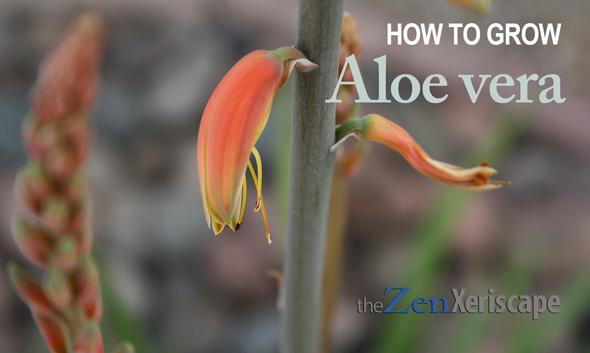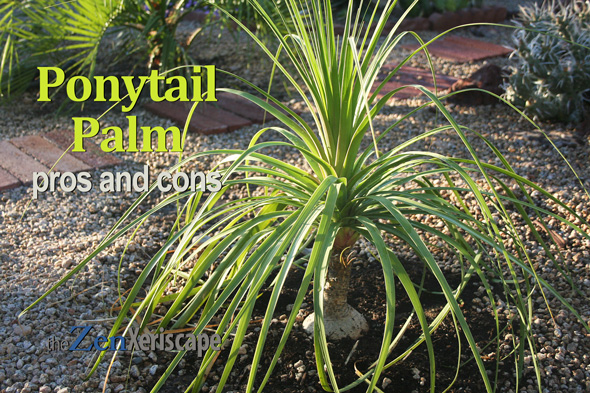The ponytail palm (Beaucarnea recurvata) is a versatile, hardy, and drought-tolerant plant that is perfect for your drought-tolerant landscape or inside your home. However, despite being called a palm, this plant is actually a succulent! It has a unique, tropical appearance, and can eventually become an attractive focal point in your design. So, here are the ponytail palm care requirements!
But, don’t worry—this plant requires only minimal maintenance.
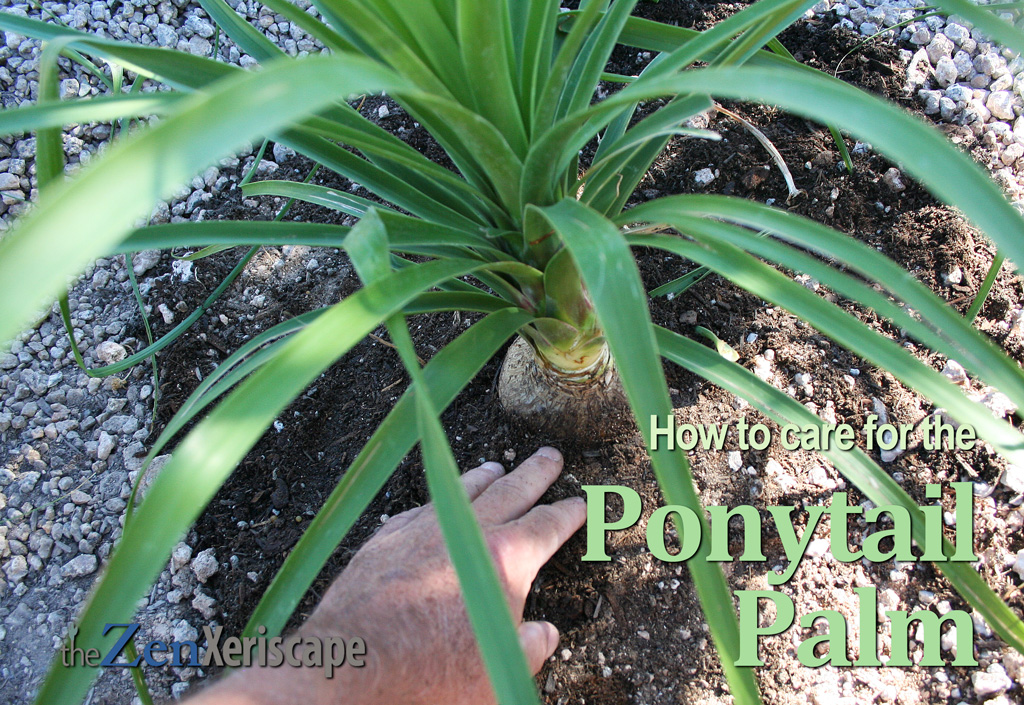
only a little bit of time, there are some
points that are crucial for its health.
Photo by Doug Martin
Versatile uses for both inside or outside
You can use the ponytail palm in a container inside your house, or take the planter outside to enhance your landscape. In addition, this plant is a perfect way to add a unique focal point of exotic beauty to your arid landscape outside—just plant it in the ground!
Ponytail palm care
Ponytail palm in planters:
Use the ponytail palm in a planter
This succulent can be grown in a planter or other container inside or outside of your home. It can grow for decades and, once established, requires minimal maintenance.
Your ponytail palm planters would look good placed around the pool, back porch or outdoor living area. Or, to create exciting curb appeal, place a planter on each side of your garage or entranceway.
In the future, I plan on putting a larger specimen in a large planter that I already have located right by my front door. That would be a spectacular way to greet guests, and would spark conversation and compliments.
Container or planter requirements
Your planter should have drainage holes. Other than that, be sure the container has a little extra room to accommodate the ‘globos caudex’ at the base of the plant. About one-to-two inches wider than its caudex would work well.
Although this succulent grows slowly, the extra room will mean you won’t have to repot for a couple of years.
Soil requirements
In your container, use well-draining potting soil. A soil specially designed for cactus or other succulents is the best choice. Or, use organic potting soil with perlite and a little sand mixed in.
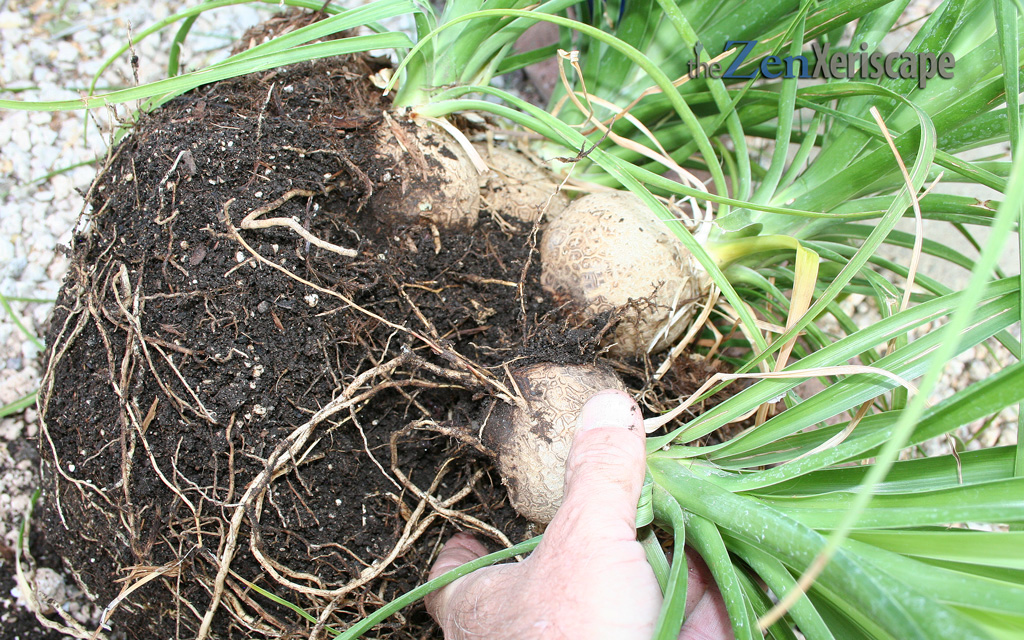
look for smaller pups tucked in by its side.
That way, your cost per plant will be reduced!
Photo by Doug Martin

prune or tease out the roots so they
don’t grow in a circle once potted or planted outside.
Photo by Doug Martin
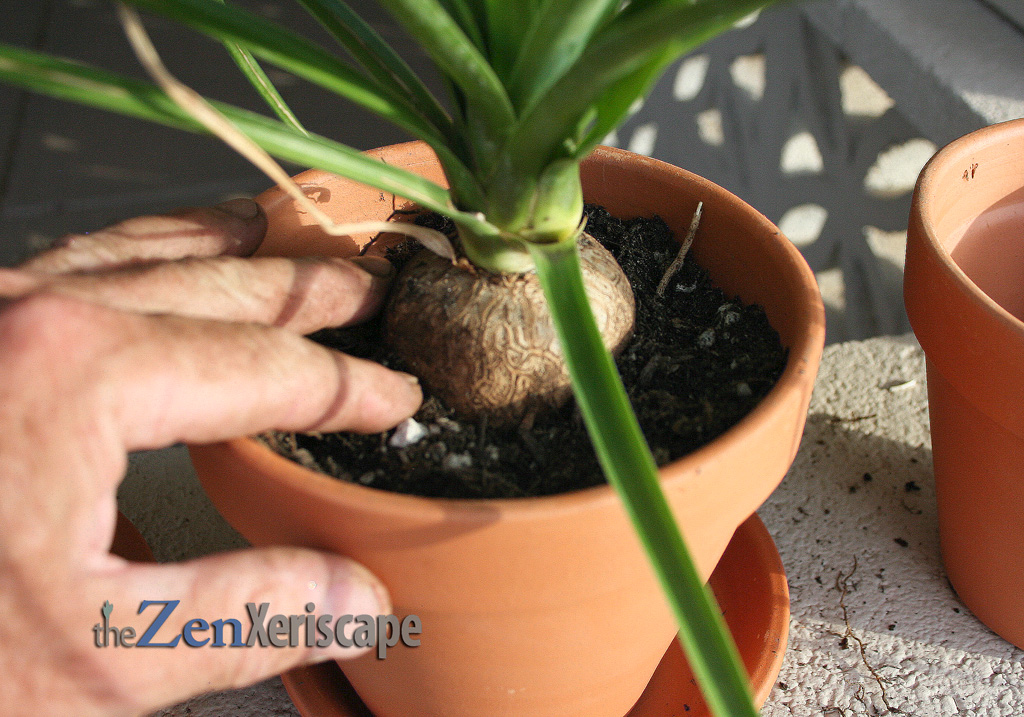
don’t plant too deeply. Keep the caudex
above the soil while keeping roots in soil.
Photo by Doug Martin
Get Prime! (As an Amazon Associate, I earn a commission from qualifying purchases.)
Light requirements
Ponytail palms do well in bright light. In your home, south- or west-facing windows will work well.
If you’re placing your containers outside, morning sun is best. If you live in a region with extremely hot summer temperatures, place your containers in morning sun only.
For newly potted ponytail palms, gradually increase their time in the sun. Start them out slowly. Even this tough succulent can be stressed-out from too much sun too soon after potting.
Water sparingly
The ponytail palm is drought-tolerant, and requires infrequent deep waterings. Allow soil to completely dry out in between waterings. Only then can you water deeply, but be sure water drains adequately.
Do not allow undrained water to remain close to the large caudex at the base of this plant. Otherwise, it could rot.
Fertilize infrequently
This succulent requires very little fertilizer to thrive. If you do fertilize, use a balanced blend that is best for succulents, and fertilize in the spring.
Repotting requirements
Repot the ponytail palm every few years. It prefers being root-bound, but if its caudex is getting close to the edges of the pot, then it’s time for a new, slightly larger container.
Room temps
The ponytail palm can thrive in a wide variety of indoor room temperatures. Anywhere from 50 degrees fahrenheit in the winter up to 90 degrees or more in the summer (if you don’t have AC).
If you have your ponytail palms in containers outside, keep them out of the afternoon direct sun in the summer, especially if those temperatures climb over 90-to-100 degrees F. In the winter, they can survive hard frosts in the ground, but as a precaution, I would cover them or bring them inside.
Ponytail palms planted outside:
Many of the requirements for the ponytail palm are similar whether planted in a container or outside in the ground. Overall, most plants, including the ponytail palm, will tolerate a wider range of temperatures when planted outside in their natural habitat.
Space requirements
The ponytail palm grows very slowly, but can eventually reach over six feet tall! The caudex, which is the bulbous structure at the base of the plant, can eventually swell and grow to six feet wide or more!
I’m sure I won’t live long enough to see my ponytail palms grow up to six feet tall. But, the people who come after me might be able to enjoy that magnificent sight! That would certainly be a grand observation to behold!
Soil requirements
Must be planted in well-draining soil. This plant can quickly rot and die if its base (caudex) sits in pooling water. To enhance drainability in your landscape, use a specially prepared soil mixture for cactus or other succulents.
Or, add organic potting soil with perlite or crushed lava rock mixed in.
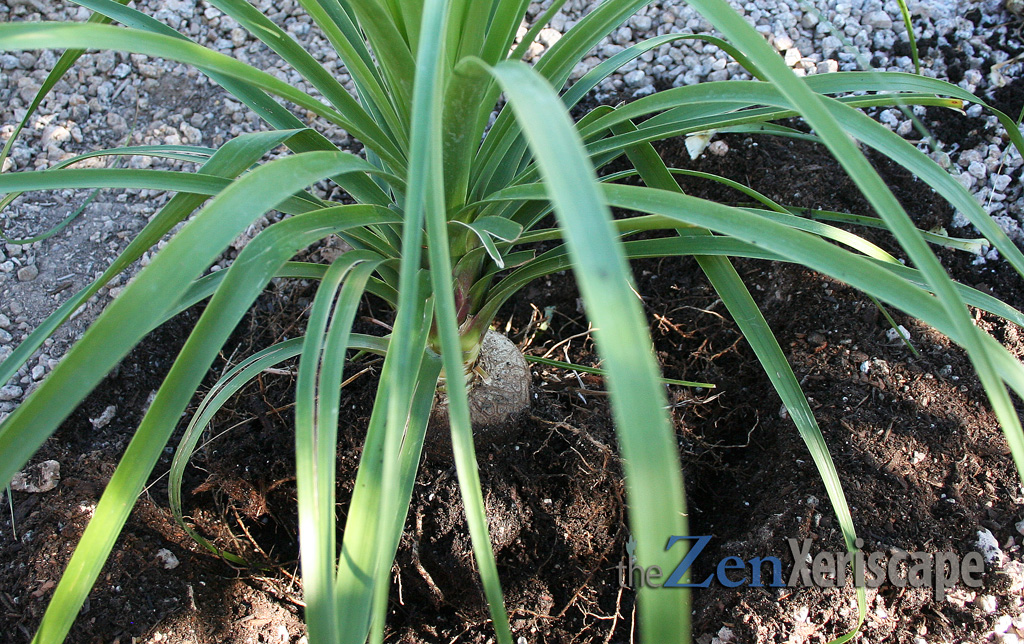
caudex above the soil while keeping the roots
beneath the soil. This will help
prevent rotting.
Photo by Doug Martin
Buy soil amendments for your garden! (As an Amazon Associate, I earn a commission from qualifying purchases.)
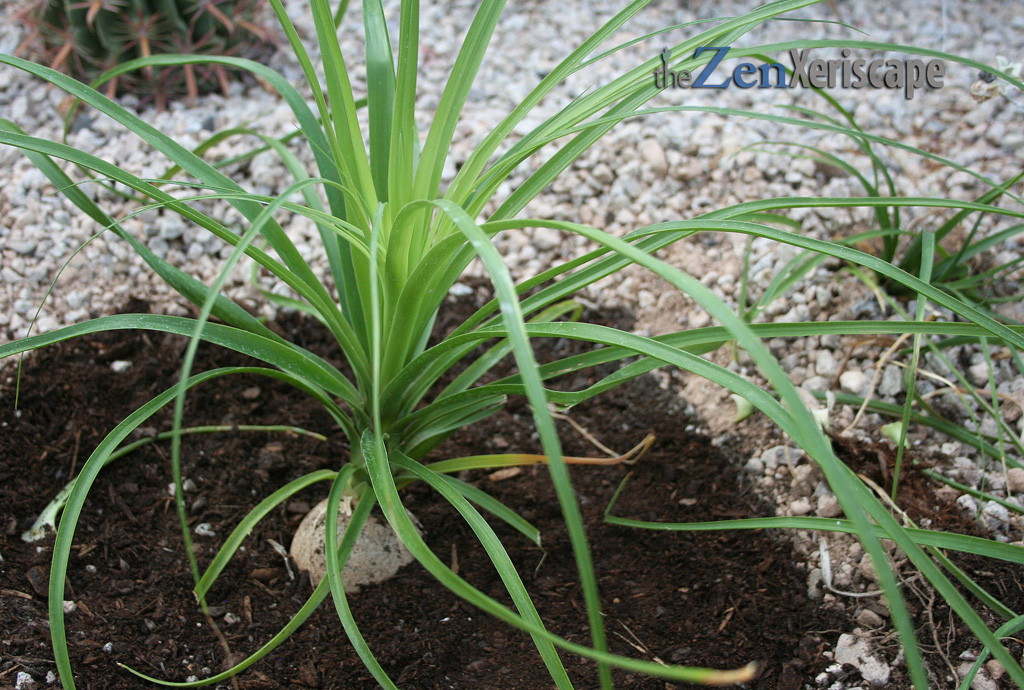
Also, keep most of the caudex above the soil,
but the roots in the soil.
Photo by Doug Martin
Light requirements
Outside, the ponytail palm does well in full-sun. However, if you live in a region with extremely hot summers like I do, consider providing afternoon shade.
I live in southern Arizona, and we get extremely hot summer temps—sometimes 120 degrees F and above! Yet, I have my ponytail palm planted in full-sun, all day.
However, it does show some signs of stress in the summer. The leaves get yellow and brown on the tips. Despite that stress, it continues to thrive (but afternoon shade would be best).
Water infrequently
This succulent is drought-tolerant and does well in arid landscapes and xeriscapes. However, I water my ponytail palm about once-a-week during the summer. When I do water, I never let it pool around the base of the plant. Never!
In the winter when it goes dormant, I only water once-a-month.
Above all, the soil should always dry out completely for the best ponytail palm care! Too much water can quickly kill this tough but also sensitive succulent. Always be on the lookout for standing water close to this plant.
Fertilize sparingly
I only fertilize my ponytail palm in the spring. Then, I use the same fertilizer I have in-stock for my palm trees. However, this plant is not a palm tree, but the fertilizer contains a balanced mixture, so that’s what I use.
Temperature ranges
The ponytail palm should thrive outside if your landscape is in USDA hardiness zones of 9-to-11.
Here around the Phoenix, Arizona, suburbs, we almost always have a couple of days that get up to 118 degrees F and above in the summer. And in the winter, we usually have a few nights that get down to the mid-20s F or below.
So far, my ponytail palms have survived both of those extreme highs and lows. However, if your region dips into the low 20s or below, you should provide protection for this plant.
Pruning duties
In the early spring, I always remove the lower dried-up leaves on the trunk of this plant. In addition, one of my ponytail palms has grown lots of other branches from its caudex.
I am also planning to prune off all those branches, but I will wait until the fall when temperatures moderate. I believe that by pruning off all the other branches, the plant can devote all its energy to growing its main trunk.
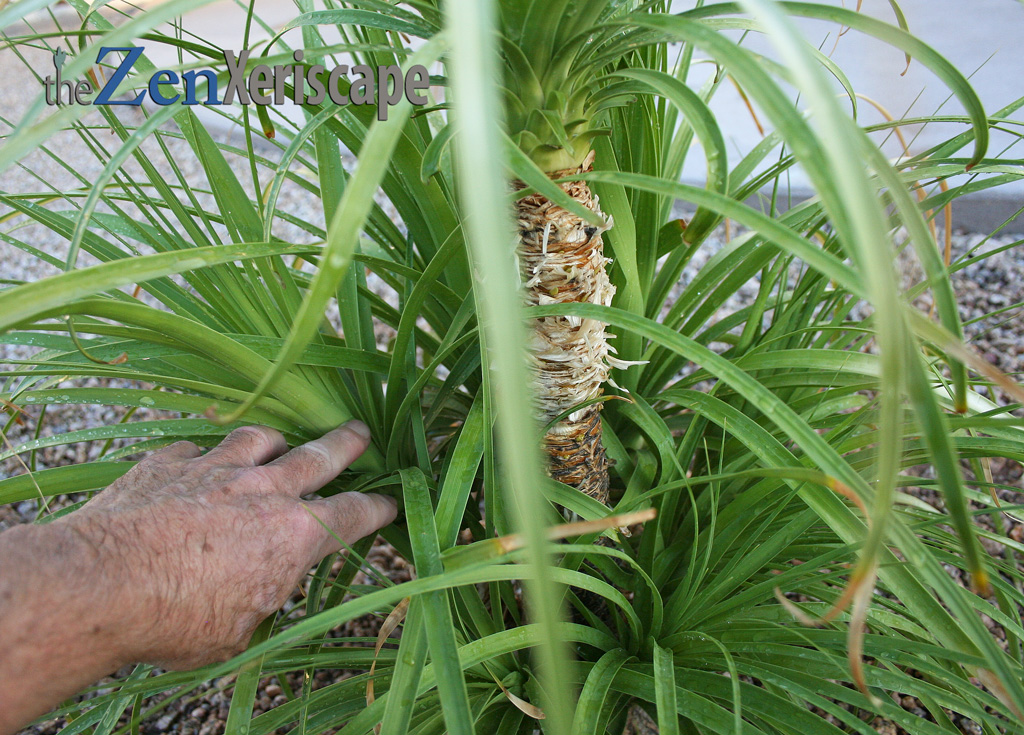
that have dried out or turned yellow.
This fall, I will prune the side branches
that are growing out of the caudex.
Photo by Doug Martin
Takeaways:
Ponytail palm care
This plant is one of the easiest landscape and houseplants to grow and maintain. It survives on little water, infrequent fertilization, and a wide range of temperatures. Because of its unique beauty that intensifies as it ages, I recommend you include this plant in your landscape as well as a container plant inside your home.
Read more about the ponytail palm pros and cons, and then decide if this will work in your landscape or home.
Thanks for reading our article about ponytail palm care! If you already have a ponytail palm, please share your experiences with this unique plant.
Content and photos by Doug Martin and The Zen Xeriscape.


